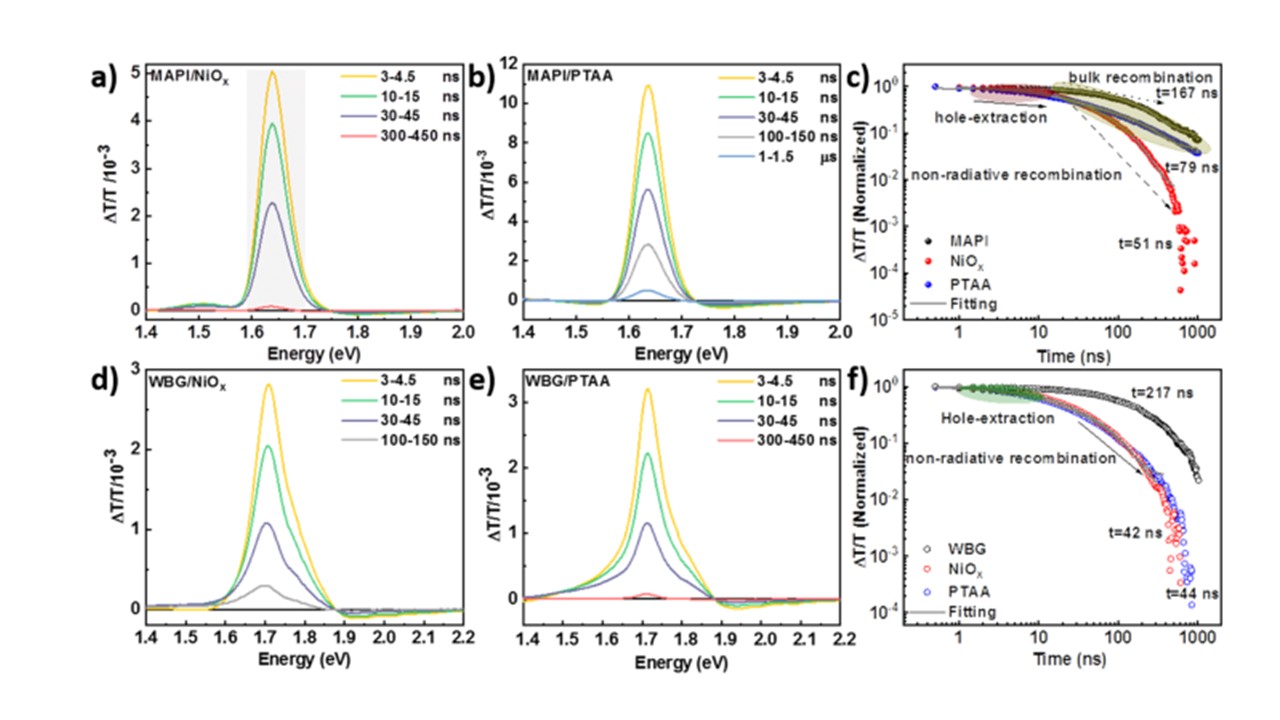

Carrier recombination at the interface between charge extraction layers and the perovskite photoactive layer in solar cells reduces the quasi-Fermi level splitting (QFLS) and hence the device’s open-circuit voltage (VOC). Distinguishing between interfacial carrier recombination and charge extraction requires selective probing of carrier dynamics with transient optical spectroscopy techniques. However, bulk recombination, interfacial recombination, and charge extraction all contribute to the transient response, making a precise determination of individual rates challenging. Here, we compare two commonly used hole transport layers (HTLs), namely, PTAA and NiOx, adjacent to prototypical MAPI3 perovskite photoactive layers and wide-bandgap perovskites. We demonstrate that combining time-resolved photoluminescence (TR-PL) and transient absorption (TA) spectroscopy measurements can reveal recombination losses associated with the perovskite/NiOx interface, as confirmed by drift-diffusion simulations. The best performing MAPI3/PTAA-based device exhibits less nonradiative recombination and more efficient charge extraction, facilitated by favorable energy level alignment.
